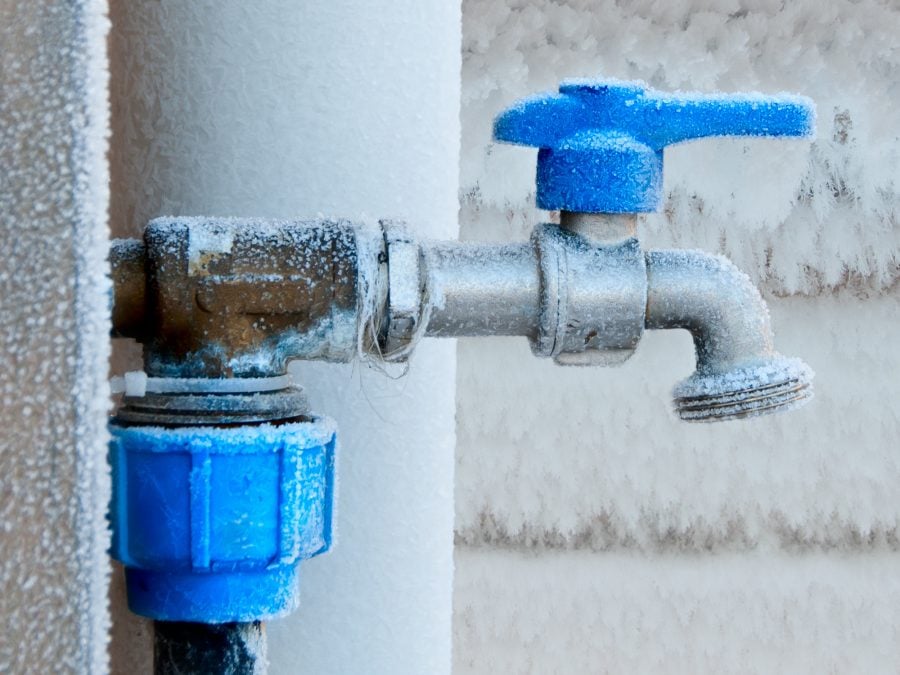We've encountered the article involving Prevent Frozen Pipes directly below on the web and felt it made sense to quickly share it with you in this article.

Winter can ruin your plumbing, particularly by freezing pipelines. Below's exactly how to stop it from taking place and what to do if it does.
Introduction
As temperature levels decrease, the risk of icy pipelines boosts, potentially leading to pricey repair services and water damage. Recognizing exactly how to prevent icy pipes is crucial for house owners in chilly environments.
Comprehending Icy Pipes
What creates pipelines to freeze?
Pipelines freeze when subjected to temperatures below 32 ° F (0 ° C) for expanded periods. As water inside the pipelines ices up, it broadens, putting pressure on the pipe wall surfaces and potentially triggering them to break.
Risks and damages
Icy pipelines can result in water system disturbances, home damages, and pricey repairs. Burst pipes can flooding homes and trigger considerable architectural damage.
Signs of Frozen Water Lines
Recognizing icy pipes early can avoid them from rupturing.
Just how to determine icy pipes
Try to find reduced water circulation from taps, uncommon odors or sounds from pipelines, and visible frost on revealed pipelines.
Avoidance Tips
Insulating susceptible pipes
Wrap pipelines in insulation sleeves or make use of warm tape to secure them from freezing temperatures. Focus on pipelines in unheated or exterior locations of the home.
Home heating techniques
Maintain indoor spaces sufficiently heated, specifically areas with pipes. Open closet doors to allow cozy air to circulate around pipelines under sinks.
Safeguarding Exterior Plumbing
Yard hoses and outside faucets
Detach and drain pipes yard hoses prior to winter. Set up frost-proof faucets or cover outdoor faucets with shielded caps.
What to Do If Your Pipes Freeze
Immediate actions to take
If you believe frozen pipes, maintain faucets available to soothe pressure as the ice melts. Utilize a hairdryer or towels taken in warm water to thaw pipelines gradually.
Long-Term Solutions
Structural adjustments
Take into consideration rerouting pipes away from exterior walls or unheated areas. Add extra insulation to attics, basements, and crawl spaces.
Upgrading insulation
Invest in premium insulation for pipes, attics, and walls. Appropriate insulation assists keep regular temperature levels and minimizes the danger of frozen pipes.
Final thought
Stopping icy pipes calls for aggressive measures and fast actions. By recognizing the causes, signs, and safety nets, home owners can protect their pipes during winter.
5 Ways to Prevent Frozen Pipes
Drain Outdoor Faucets and Disconnect Hoses
First, close the shut-off valve that controls the flow of water in the pipe to your outdoor faucet. Then, head outside to disconnect and drain your hose and open the outdoor faucet to allow the water to completely drain out of the line. Turn off the faucet when done. Finally, head back to the shut-off valve and drain the remaining water inside the pipe into a bucket or container. Additionally, if you have a home irrigation system, you should consider hiring an expert to clear the system of water each year.
Insulate Pipes
One of the best and most cost-effective methods for preventing frozen water pipes is to wrap your pipes with insulation. This is especially important for areas in your home that aren’t exposed to heat, such as an attic. We suggest using foam sleeves, which can typically be found at your local hardware store.
Keep Heat Running at 65
Your pipes are located inside your walls, and the temperature there is much colder than the rest of the house. To prevent your pipes from freezing, The Insurance Information Institute suggests that you keep your home heated to at least 65 degrees, even when traveling. You may want to invest in smart devices that can keep an eye on the temperature in your home while you’re away.
Leave Water Dripping
Moving water — even a small trickle — can prevent ice from forming inside your pipes. When freezing temps are imminent, start a drip of water from all faucets that serve exposed pipes. Leaving a few faucets running will also help relieve pressure inside the pipes and help prevent a rupture if the water inside freezes.
Open Cupboard Doors
Warm your kitchen and bathroom pipes by opening cupboards and vanities. You should also leave your interior doors ajar to help warm air circulate evenly throughout your home.

Hopefully you liked our excerpt about 6 Ways to Prevent Frozen Pipes. Many thanks for taking a few minutes to browse our posting. If you enjoyed our blog posting plz consider to share it. We thank you for your readership.
Call Today
Comments on “Avoiding Pipes from Cold Weather: Top Strategies”